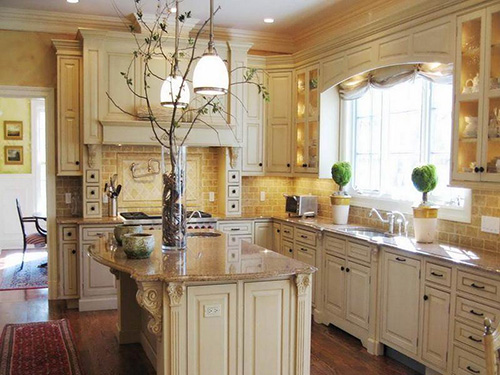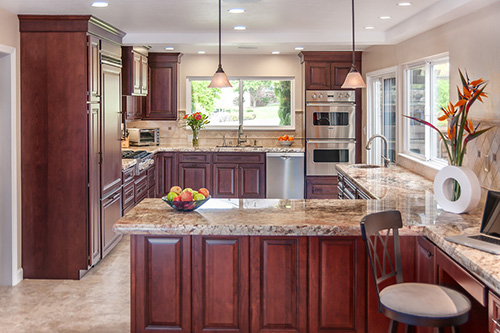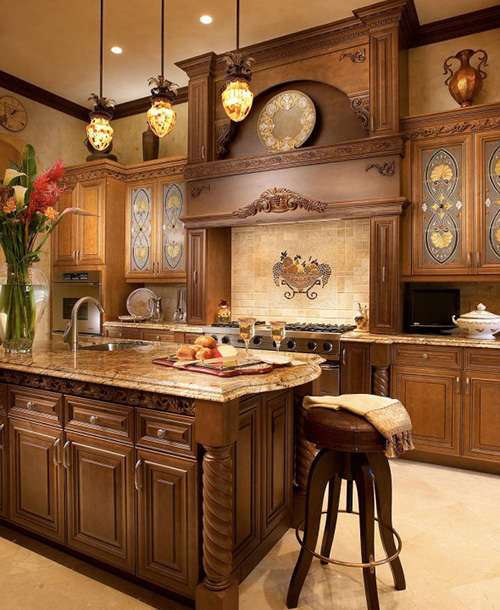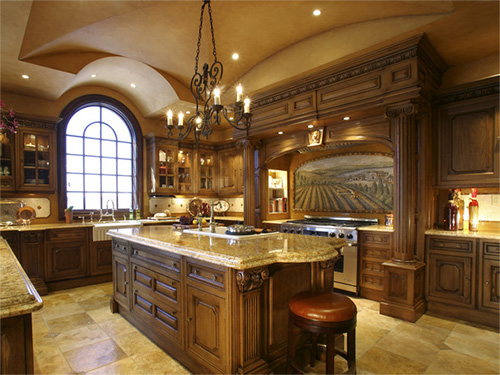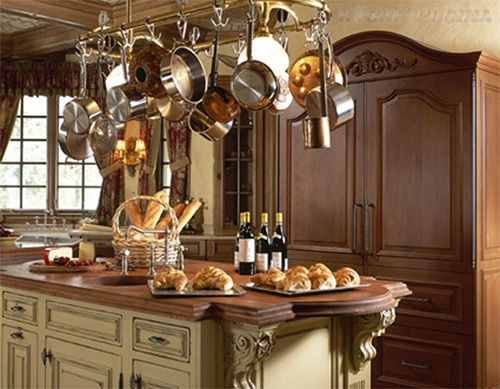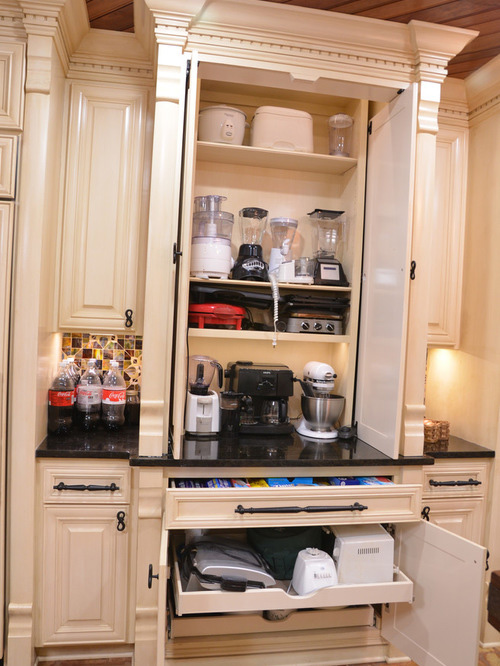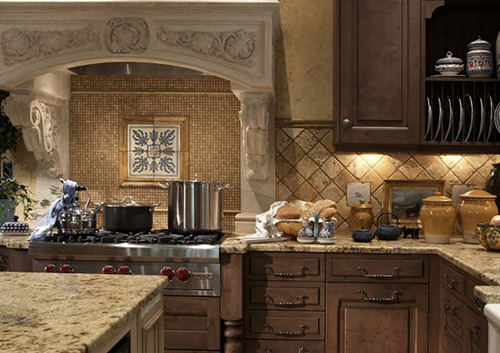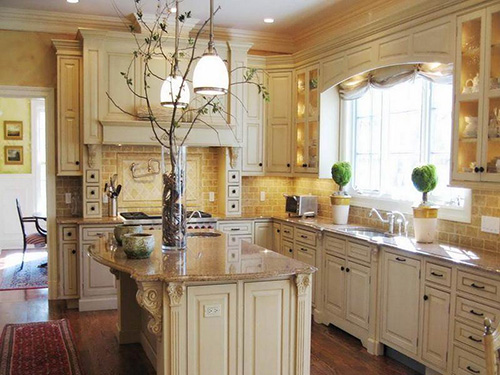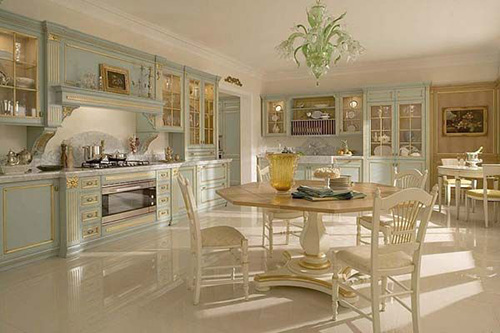Tradition, in the very essence of its etymology, is a relative term. Anything that takes root in the old, and has been time honored enough to be used in slight variations over the course of centuries might be tradition. When it comes to design, traditional becomes a very important key word – one, which, used in singularity would lead the mind to the conventional, to the orthodox, to the plain Jane techniques that have become a quintessential part of our culture. But in this article, the kind of traditional we would be discussing, takes its root in the culture of classical, and how, over the course of time, and renaissance, we have come to terms with the neo classical movements. The cabinet designs we would discuss in the article would be heavily leaning on the ornate side, with elements from the era – the classical era – that still defines tradition.
1. Defining Convention
One of the most discerning patterns of the traditional style is wainscoting on the cupboard – or in this case, cabinet doors. This design distinctly features wainscoting as a major design element on each and every cabinet door, and combined with the aesthetics of the wood, it gives of a distinctive aura of power and wealth, of opulence and the ornate. The cornices on top of each cabinet head are designed in the image of the entablature, and the overall outlook of this design is stylish, sophisticated, and neat. The lighter tone of the countertops balances out the darkness of the wood, and the collocation of the material is complementary.
2. Gingerbread
This traditional kitchen cabinet set is quite grand – with its double height design, ornate carving that is small in amount, but large on the impression, and the golden browned hue of the wood, each cabinet is constructed from. In addition, there is an uncanny combination of stained glass on the cabinet doors, and wainscoting on the base cabinets of the kitchen island. Overall, the design concept is well articulated into each and every nook of the façade layout, and carries an aura of elaborate ostentatiousness, without being overbearing about it.
3. The Column Decides
Another uniquely traditional design – the holding feature for this one is the use of the classical column of the Ionic order, and the traditional style of the entablature and frieze, to hold up the hood above the stove. This design seamlessly converges into the cabinet units without being florid, and subtly diverges into the entire façade of the cabinet unit system with grace and authority. This cabinet design features a timeless classic routine, with man of the feature that were home in the classical era, and combines them with modern sensibilities, without being ornery about it.
4. Authentic Retro
This one combines a bit of a vintage element along with its classic – the hanging pots and pans above the island are major design element, which add a bit of clutter to the vision, while inspecting the façade – it’s a good distraction, and combined with the subtle ornate constitution of the cabinetry, a welcome one. The warm color of the wood, combines well with the lighter scheme of the color palate, and the intricate carving on the supporting corbels of the island adds a very baroque feel to the entire aesthetic.
5. Simply Hellenic
This one is a definite neo classic, with all the characteristic itemization of a traditional column engraved in the design of its one cabinets, which holds all of the subsidiaries of smaller cabinets in its design. The cornice curves into the frieze, which molds into the entablature, and folds down into elongated columns, whose base supports the wainscoted drawer and cabinet, used for storage. The white color of the entire design makes for an authentic experience with this scheme, as the cabinet very literally translate all the traditional concepts of the classical era.
6. An Embellished Charm
This traditional kitchen cabinet set is fastidious, but definitely not overdone in any way. In fact the combination of light and dark colors, along with the dim golden lighting is very grandiloquent, as well as effective. The sleek, curved down handles of each cabinet go in tandem with the simplicity of each face of the cabinet, and the dull brown of the wood is highlighted by the gold of the lighting. The play on various textures is effusive and makes the entire setting seem ornate, without being flashy about it.
7. New, going Old
This traditional kitchen cabinet set expertly amalgamates the new with the old – with the use of material and conventional style of modern contemporary, it gives of a uniquely sophisticated vibe, but ends up leaning heavily towards the traditional side. The wood, combined with tiling, and the glass face of the cabinets is distinctively modern, and yet the one carving on the head of the hood is what overwhelms the rest of the modern capacity of this design, making it seem characteristically traditional.
8. Traditionally Vintage
This one makes smart use of the Doric and Corinthian column schemes, and synthesizes it into a discerningly modern setting. The fact that this design uses a white color scheme that was preferable in the classical era, and combines it with a more rustic, yellowish brick layering shows attention to detail – as both effortlessly combine to give a rather masterful overall look to the entire setting. Then the use of traditional elements gives off that grand, and compelling look, making it seem austere, without the starkness.
9. Wrought with Gilt
This traditional kitchen cabinetry set leans more towards the rococo aesthetic – with a light, powder blue color scheme with gold trimming, and a focus on light, playful sort of ornate. The amalgamation of the old with the new is quite seamless, in that there are no visible visual blockades from one style to the nest.
10. Full Circle
Classically traditional, this one makes an efficient use of the white color scheme with proper lighting and vague articulation of traditional design elements in the cabinet facades – the wainscoting, the gold inlay, its careful consolidation with modern material of glass and wood. The overall look is all elegance and chic.
